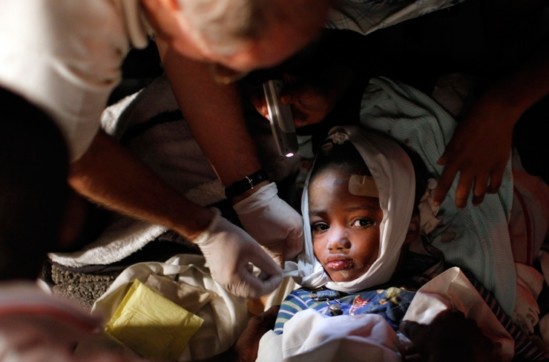Online Giving and Rapid Response Trends

The recent Haiti earthquake disaster has once again brought to the forefront the role that new giving channels play in helping those most affected. The combination of online giving and mobile giving were the first response channels of choice by donors. I will save the pros and cons of mobile giving for another blog post.
I did some research to look back at previous major events and the volume of online giving that took place. Blackbaud has online giving data going back to 1999 and that allows us to look at some historical trends. USA Today referenced some of these trends in their recent “More go online or text to donate for Haiti’s quake victims” article.

The graph above shows the volume of online giving for the first five days immediately following each major event. This was based on approximately 3,300 nonprofit organizations that had online giving data for these time periods.
Online giving following the Haiti earthquake was 19% greater than response to the 2004 Asian Tsunami and 109% greater than Hurricane Katrina in 2005. The tsunami data begins on December 26, 2004, following the earthquake off the west coast of Sumatra, Indonesia. The Katrina data begins on August 29, 2005 when the hurricane made its second landfall in Louisiana. Online giving during the first give days following September 11, 2001 was less than 1% of what was given towards Haiti relief.
All of these events have a very long tail of online giving, but the purpose here was to look at the first few days when online giving serves a key role in raising money for relief. It should also be noted that there’s a pareto distribution on the organizations receiving most of the donations. For each event, about 80% of the donations were received by 20% of the organizations.
A year-over-year comparison of organizations not specifically raising money for Haiti relief did not have any unusual difference in online giving in January 2010. Giving to organizations directly involved in Haiti relief were simply off the charts compared to previous time periods and other events in the analysis.
There are a few important points to make from all of this. First, nonprofits that had a plan in place to quickly respond online through web content, focused online giving, and email communication performed better than organizations that didn’t. You cannot react fast enough to just be a fast follower. Things move too quickly, in particular how soon various media outlets begin referencing where people can donate online. If your nonprofit is involved in programs and services often related to disaster relief, then you better have a plan and resources in a staging mode. And every organization should have some kind of emergency communication plan that involves the use of the web.
Second, the response to these kinds of unfortunate events will only increase in the future. We are well beyond the tipping point of whether people will give online and that is now true for mobile giving in North America too. Several organizations reported system outages from other vendors and tools being used. Now would be a good time to ask about whether your system can handle even larger volumes. This is a situation where poorly built multi-tenant systems can knock down anyone using them, including those organizations not directly involved in relief efforts.
Finally, this might be the end of internal obstructionists that question the importance of online communication and giving. Remind them that it is a multi-channel world, even if your nonprofit serves other parts of the sector. And it may prompt some more serious discussions about how prepared organizations are for the future.
